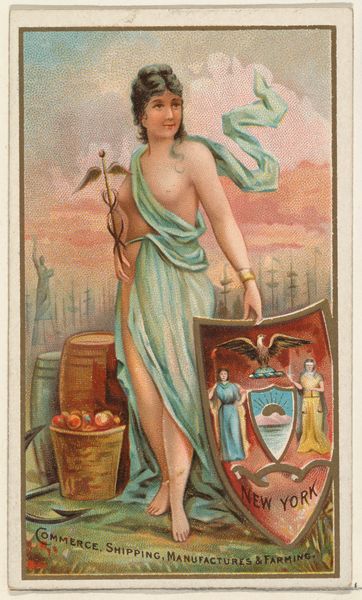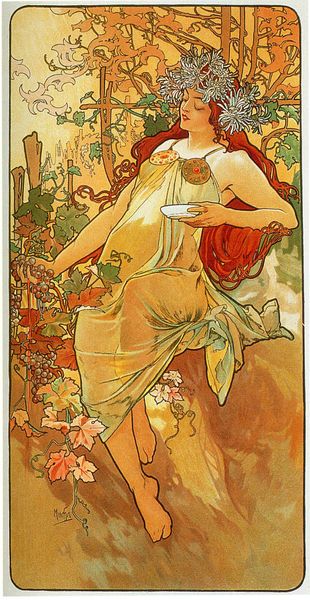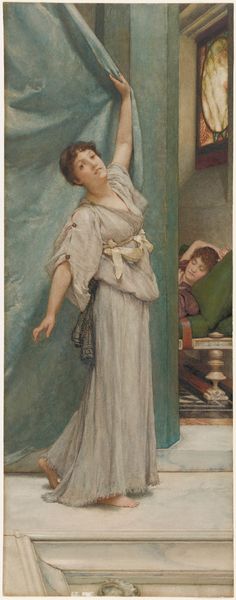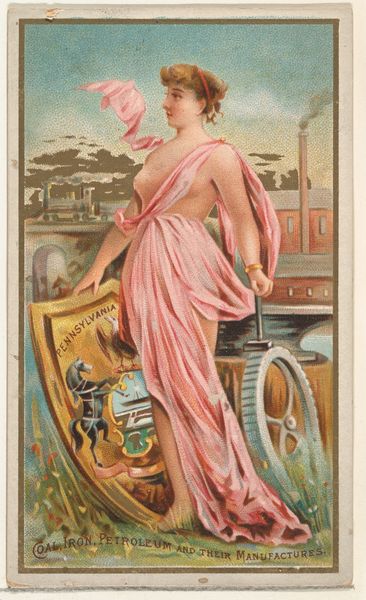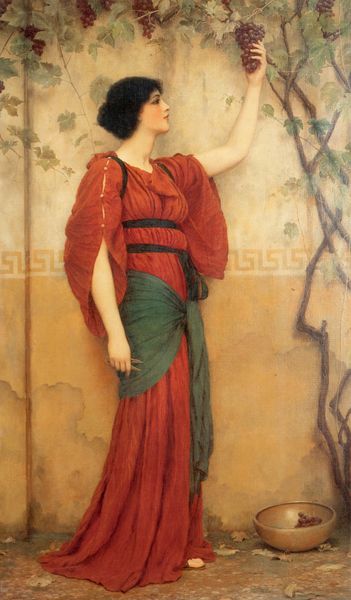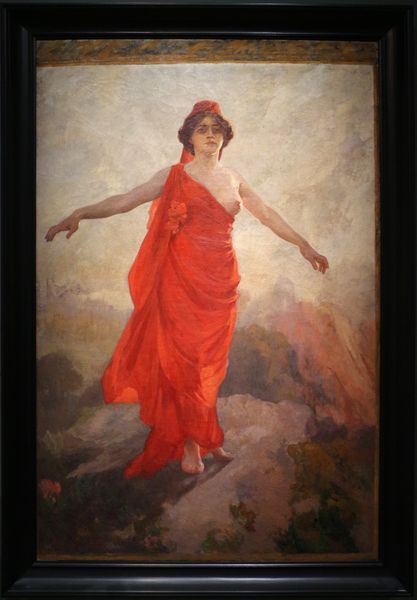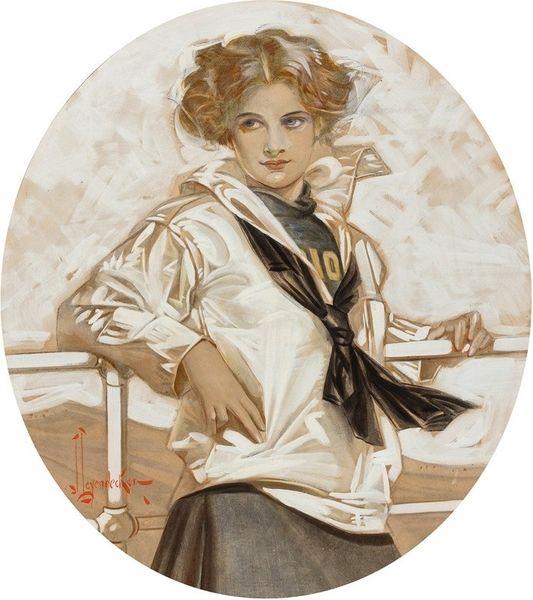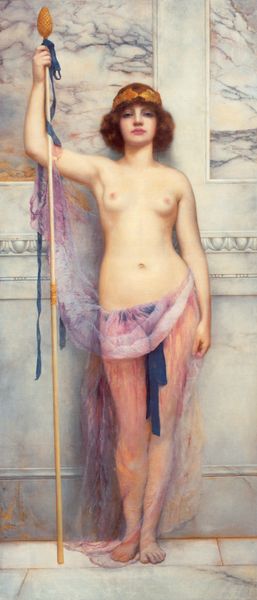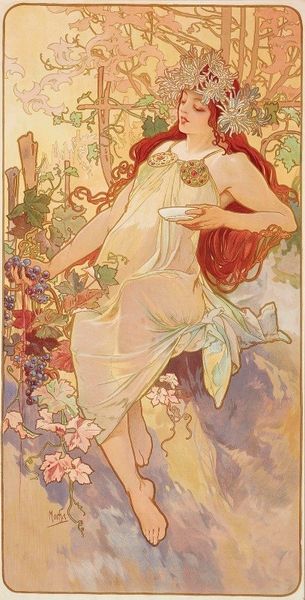
Copyright: Public domain
Curator: This is "The Odysseus," painted in 1858 by Jean-Léon Gérôme. Gérôme, of course, was a leading figure in the French Academic style. Editor: My first impression is one of surprising simplicity. The palette is quite muted, almost monochromatic, and the composition feels incredibly restrained. The billowing green fabric definitely draws the eye, its swirling form creating an immediate sense of movement and drama, yet is simultaneously confining her within its boundaries. Curator: Indeed. And I think we need to consider this painting within the context of 19th-century academic painting. The depiction of Odysseus, or perhaps, a more metaphorical interpretation of his journey home, becomes an exploration of colonialism and gender roles. She seems burdened, perhaps trapped by duty or expectation. Editor: It is her expression; that look of resignation, that really grabs me. Her eyes seem to convey this intense weariness. You have to look closely to really observe how Gérôme contrasted this soft expressiveness with such tightly controlled drapery, with such formal lines defining her robes, to fully communicate her exhaustion. Curator: Precisely. What seems like a simple portrait quickly unravels under closer scrutiny into a narrative of internal conflict and social constraint. Is she meant to embody triumph, or to be read as an allegory for feminine subservience? Look at her bare feet—that striking symbol of vulnerability. And what to make of the municipal coat-of-arms at the top left of the canvas? Editor: From a formal perspective, I find the flatness intriguing; and what some viewers may call “primitive”. Look at the shadows on the fabric, that push of the avant-garde toward flatness so masterfully done here. In his brushwork Gérôme seemed to presage changes happening throughout the artistic communities of France. The more you look, the more apparent it is, how avant-garde he was, in fact. Curator: A prescient approach—one that underscores our complex relationships with the visual representation of historical events. Editor: Gérôme makes me think again about what it really means to create art from history; which, here, is just another term to apply to identity. Curator: Absolutely, these representations influence not just our historical understanding but, indeed, they are very alive today.
Comments
No comments
Be the first to comment and join the conversation on the ultimate creative platform.

